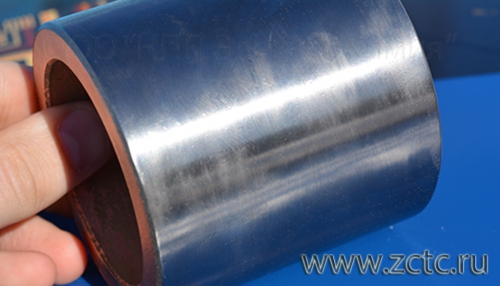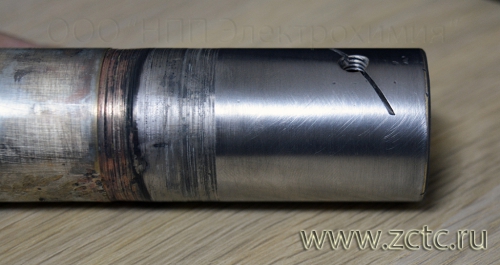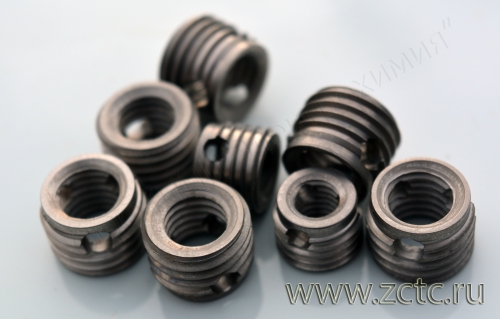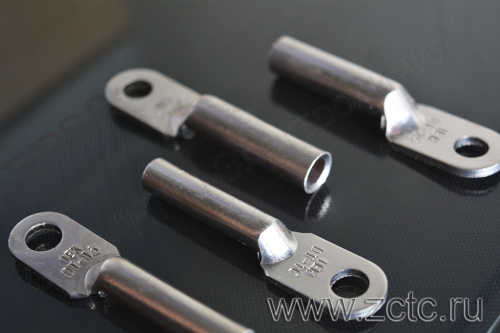TIN-NICKEL ON COPPER
Description
Tin-nickel alloy with a tin content of 60%, has an exceptionally high corrosion resistance and increased hardness, while remaining ductile. It is an anode to copper. Its color is silvery pink and shiny. The potential difference between tin and nickel is 0.1V. Despite the fact that the process of electrolytic deposition of a tin-nickel alloy is not fully understood, it has received significant industrial application. The main feature of the coating is its complete stability in concentrated nitric acid. Along with this, the tin-nickel coating withstands the effects of dilute sulfuric and hydrochloric acids, sodium chloride, and 100% humidity. This alloy practically does not oxidize to 300°C in air, while remaining in a passive state.
Sn-Ni is several times more wear-resistant and elastic than pure electroplated nickel. Tin-nickel alloy can replace silver when it is necessary to stabilize transient electrical resistance in sulfur-containing environments. With a thickness of 30-35 microns, it is applied instead of a decorative chrome coating, in contrast to which it has much greater uniformity in thickness, especially on complex-profile parts. In Europe, the alloy is actively used instead of tin-bismuth, because bismuth is a highly toxic metal. It perfectly replaces Sn-Bi for soldering and with increased requirements for mechanical strength. In jewelry production, Sn-Ni is a separating layer between the coated product and precious metals due to the property of the coating to prevent their diffusion into itself and then into the base. The alloy is also used to protect the reinforcement of permanent contacts pressed into plastic. Tin-nickel plating on copper is significantly more corrosion resistant than pure nickel, tin or chrome plating and will withstand exposure to oils. When the coating is heated above 300 degrees, recrystallization occurs and transitions to a stable state with a double structure Ni3Sn2 and Ni3Sn4. In this case, the color of the surface practically does not change.
You can order tinning of copper with tin-nickel alloy in accordance with GOST 9.305-84 by phone and email indicated in the section "CONTACTS".
Characteristics
|
Designation (example) |
tin-nickel |
|
Thickness |
3-60 microns (optimal, greater thickness is possible) |
|
Microhardness |
5600-7000 MPa. |
|
Electrical resistivity at 18° C |
0.25-0.55 mOhm. |
|
Permissible operating temperature |
350° C |
|
Nickel content in Sn-Ni alloy |
up to 40% |
Advantages of tin plating:
- An exceptional feature of the Sn-Ni coating is the combination of high hardness and ductility. Tin-nickel alloy is several times more wear-resistant and elastic than pure nickel. Can be used instead of tinning when increased demands on wear resistance are imposed on surfaces;
- Completely stable in concentrated nitric acid, withstands dilute sulfuric and hydrochloric acids, and insensitive to saline media such as sodium chloride. It also does not corrode in 100% humidity. The combination of these qualities makes it possible to successfully use the Sn-Ni alloy in tropical conditions and on marine parts, but the porosity of the coating must be taken into account.
- Is an anode to copper and its alloys, protects it electrochemically even in the presence of scratches and chips.
- It has a high degree of gloss and a beautiful appearance comparable to decorative chrome; in contrast, the coating is perfectly mechanically polished. There is a slight difference in the shade: for chrome coating it is bluish, for tin-nickel it is slightly pink. The electrolyte for applying this coating has a high dispersive ability, which allows it to evenly coat parts with complex profiles, which also distinguishes the tin-nickel alloy from any chrome coating.
- Both freshly deposited and aged tin-nickel coatings for several months are soldered equally well. After two years of storage, the solder strength of the tin-nickel coating decreases by only 20%, while that of fused tin – already at 60%.
Disadvantages of tin plating:
- Tin-nickel alloy has high porosity even with a thickness of more than 50 microns.
- Unstable in concentrated hydrochloric and sulfuric acid.
- Not recommended for parts subject to flaring and impact loads.
- The permissible operating temperature is lower than that of pure nickel or chrome plating.

Do you want to become our client?
Just leave your request by filling out the form on the right and we will contact you as soon as possible. Thank you!

By submitting an application, you agree to processing of your personal data. Your data is protected.








